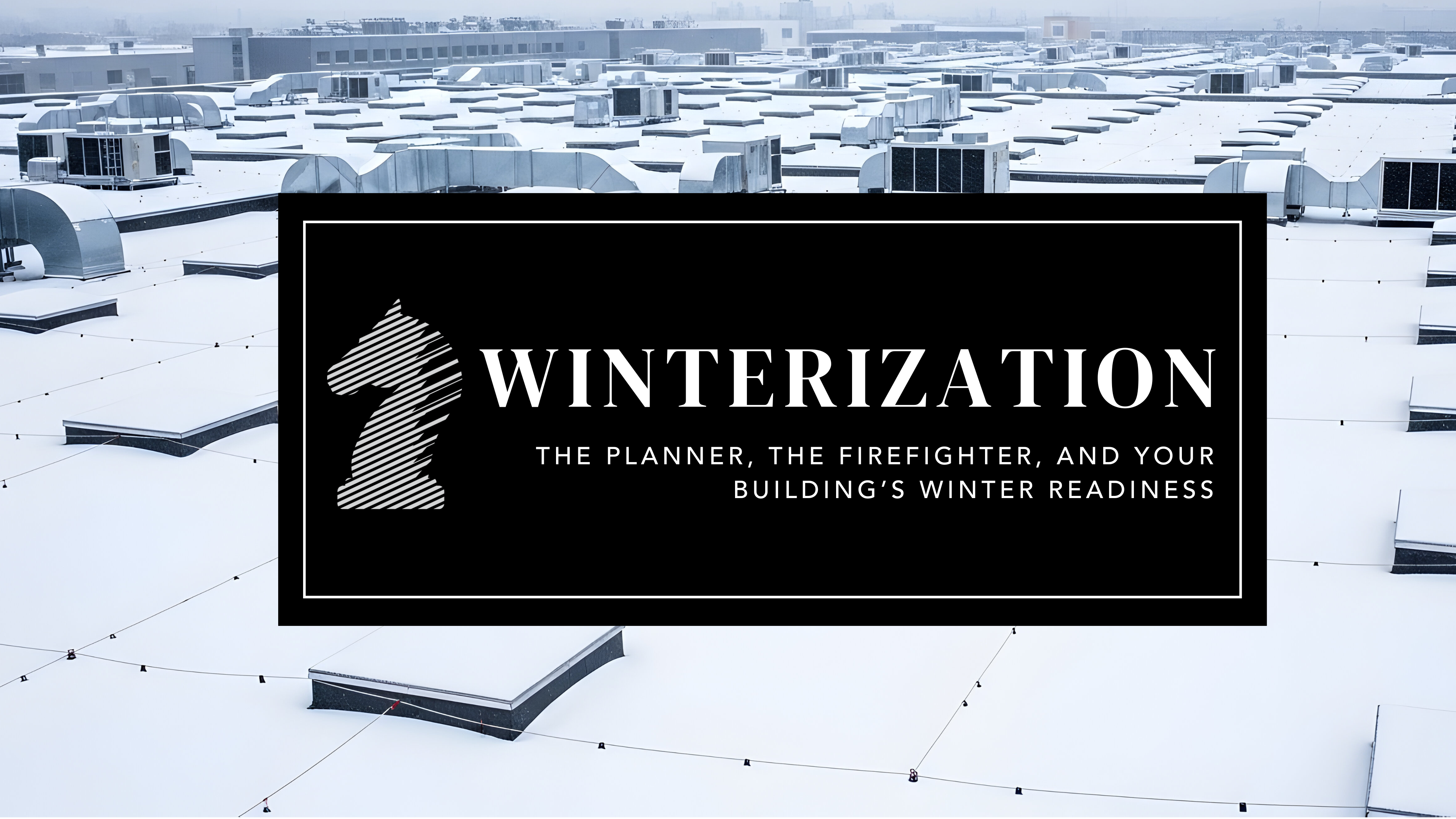By Kelsey Leslie, PE, CCP
Paladin, Inc

When it comes to commercial buildings, winter doesn’t wait for anyone. Every year, facilities that plan consistently are the ones that avoid costly downtime, emergencies, and tenant discomfort. In most organizations, you’ll find two types of cultures: the Planners and the Firefighters.
The Planners are methodical. They map out seasonal transitions, track maintenance tasks on a calendar, and prepare long before temperatures drop. The Firefighters, always putting out fires, thrive on urgency—waiting until the first frost warning before springing into action. Both groups work hard, but one works ahead, while the other works against the clock.
As a commissioning professional, I’ve seen both approaches firsthand in the field. One of our university clients, for example, dedicates specific weeks each year to system transitions. Their planning team treats winter readiness as a routine checkpoint, not a reaction. You could say they “invest time early to buy peace of mind later.” Meanwhile, others delay critical maintenance until the cold hits—and when it does, they find themselves racing to put out that fire that planning could have prevented.
The Planner mindset isn’t just about being early: it’s about understanding what matters most. In modern buildings, our winter readiness checklist includes properly serviced boilers, protected water systems, and drained cooling towers. When temperatures in Kentucky dip toward zero, those routine tasks are the difference between comfort and chaos.
Consider a cooling tower that isn’t drained and cleaned before winter. A frozen and burst pipe isn’t just a maintenance issue, it can set off a chain reaction of water loss, pressure failures, and widespread system damage. The Planner would have already drained the tower, verified heat trace functionality, and tested basin heaters weeks in advance.
If you want to steer your facility toward a Planner culture this season, start with a few key strategies:
- Create an annual maintenance calendar with fixed transition windows.
- Ensure adequate staffing during transition periods.
- Pre-order necessary replacement parts like filters, strainers, and valves.
- Establish clear communication protocols.
- Document specific procedures for each major system.
- Schedule and verify completion of required training.
When it comes to the systems that deserve your closest attention, it’s wise to focus on items like:
- Cooling towers
- Boilers and heating systems
- Water treatment systems
- Glycol concentrations
- Condensate systems
- Exterior lighting controls
- Economizer operations
- Humidity control strategies

The most effective teams don’t stop at the obvious. They account for details like vestibule heating, debris removal, critter prevention, and seasonal setpoint adjustments. These small, often overlooked tasks are what create resilience when temperatures plunge.
For buildings operating year-round, the Planner’s discipline is essential. Regular water treatment checks, system cleanliness, and preventive maintenance aren’t chores—they’re investments in reliability. Central utility plants that transition between chilled water and steam systems, for example, rely on that consistency to stay functional under pressure.
As we look toward 2026, I encourage facility teams to take a page from the Planner’s playbook. Create your seasonal maintenance schedules now, not when you feel the first chill. Develop strategies that anticipate transitions, not react to them. Train your teams to understand that seasonal preparations aren’t interruptions to normal operations—they’re essential components of a well-planned facility strategy.
Because when winter hits, the weather doesn’t care whether your team planned ahead or put out a fire last minute. The outcome is decided by the culture you’ve built. And in our line of work, the Planner’s steady preparation always beats the scrambling Firefighter mindset.
After all, winter isn’t a one-time event, it’s an annual test. The wise facility team is always ready.
